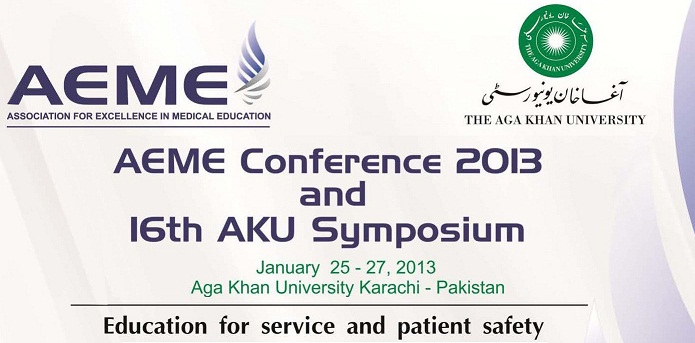Day 2 : Oral Presentations (Theme: Patient Safety)
Effect of behavioral management on migraine in adult patients visiting family practice clinics: a randomized controlled trial (pilot study)
Location
Lecture Hall 2
Start Date
27-1-2013 9:00 AM
Abstract
Background: Headache disorders are ranked amongst the ten most disabling conditions in the world by World Health Organization, and amongst them, migraine is one of the most common headache disorder. Migraine causes severe impairment in quality of life both during and between attacks. To treat it, both pharmacological and non pharmacological treatment options exist. Studies comparing behavioural and prophylactic medications show equivalent results. But most of them have been conducted in developed countries. This study aimed to determine the prevalence of migraine in adults population presenting to primary care clinics and to assess the efficacy of behavioral migraine management in their treatment.
Methodology; Study design: Randomized control trial Setting: Community health center at AKUH, Integrated Medical Services located at Malir, Korangi, and University Road, Karachi. Participants: 20 adults with a mean age of 39.8 years, (10% of the sample size of 200) with a clinical diagnosis of migraine were enrolled in pilot study. 10 patients (control group) were given treatment according to physician discretion and 10 patients (trial group) were given structured behavioral management counseling and educational material.
Outcomes: Primary outcome was the change in frequency of migraine attacks. Secondary outcome was the change in severity of migraine and change in quality of life.
Results: There was no improvement in frequency of migraine attacks at two and four weeks among both groups. However there was reduction in the severity of pain at four weeks among treatment group(p=0.02) and the quality of life also improved at four weeks(p=0.01).Conclusion: Although there was no difference after two weeks, but the intervention proved to be efficient after four weeks because of reduction of pain severity and improvement in quality of life. Key words: migraine, behavioral management, pain, intervention, quality of life.
Effect of behavioral management on migraine in adult patients visiting family practice clinics: a randomized controlled trial (pilot study)
Lecture Hall 2
Background: Headache disorders are ranked amongst the ten most disabling conditions in the world by World Health Organization, and amongst them, migraine is one of the most common headache disorder. Migraine causes severe impairment in quality of life both during and between attacks. To treat it, both pharmacological and non pharmacological treatment options exist. Studies comparing behavioural and prophylactic medications show equivalent results. But most of them have been conducted in developed countries. This study aimed to determine the prevalence of migraine in adults population presenting to primary care clinics and to assess the efficacy of behavioral migraine management in their treatment.
Methodology; Study design: Randomized control trial Setting: Community health center at AKUH, Integrated Medical Services located at Malir, Korangi, and University Road, Karachi. Participants: 20 adults with a mean age of 39.8 years, (10% of the sample size of 200) with a clinical diagnosis of migraine were enrolled in pilot study. 10 patients (control group) were given treatment according to physician discretion and 10 patients (trial group) were given structured behavioral management counseling and educational material.
Outcomes: Primary outcome was the change in frequency of migraine attacks. Secondary outcome was the change in severity of migraine and change in quality of life.
Results: There was no improvement in frequency of migraine attacks at two and four weeks among both groups. However there was reduction in the severity of pain at four weeks among treatment group(p=0.02) and the quality of life also improved at four weeks(p=0.01).Conclusion: Although there was no difference after two weeks, but the intervention proved to be efficient after four weeks because of reduction of pain severity and improvement in quality of life. Key words: migraine, behavioral management, pain, intervention, quality of life.

